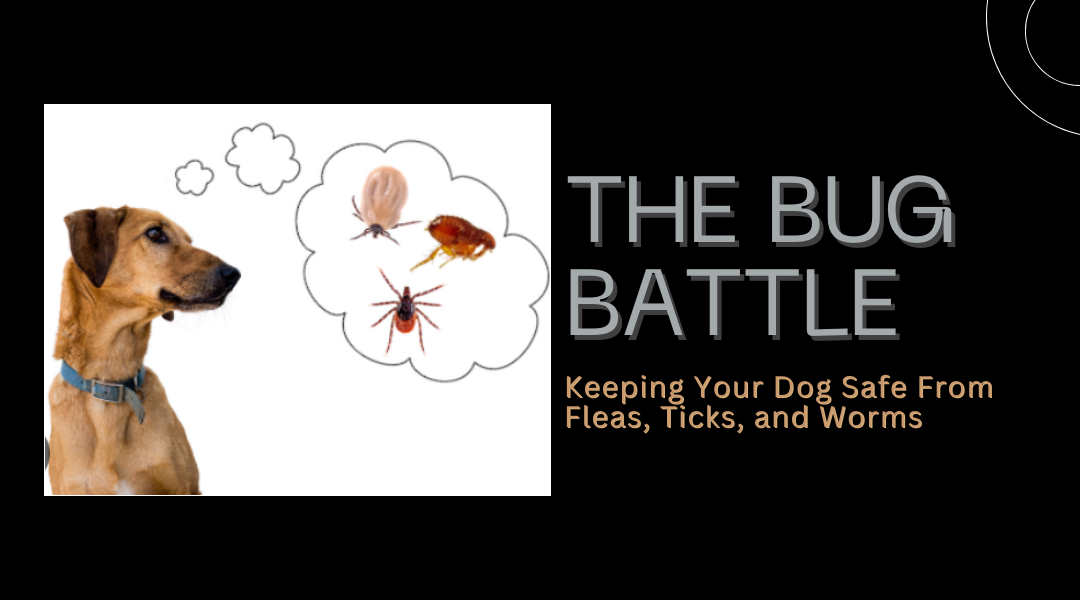Let’s talk about the creepy crawlies that make every dog owner shudder. Fleas, ticks, and worms aren’t just gross – they’re downright dangerous for your pup. I’ve seen too many dogs suffer from preventable infestations, so let’s cut through the confusion and get your dog protected the right way.
Why This Fight Matters
These tiny terrorists cause big problems:
- Fleas turn your dog into an itchy, miserable mess and can infest your home faster than you can say “vet bill.”
- Ticks are nature’s dirty needles, spreading diseases like Lyme and Rocky Mountain spotted fever.
- Intestinal worms steal nutrients and can cause serious damage before you even notice symptoms.
The scary part? Many of these pests don’t just bother dogs – they can jump to humans too. That midnight flea bite on your ankle? Thank Fido’s hitchhikers.
Your Defense Strategy
1. Know Your Enemy’s Schedule
These pests don’t take seasons off:
- Fleas thrive indoors year-round (your heated home is their paradise)
- Ticks are active whenever it’s above freezing
- Heartworm-carrying mosquitoes emerge earlier each year
Bottom line: Year-round prevention isn’t optional anymore.
2. Choose Your Weapons Wisely
The prevention aisle is overwhelming. Here’s the real breakdown:
Topical Treatments
- Pros: Good for picky eaters, some repel before biting
- Cons: Can rub off on furniture, messy, some are toxic to cats
Oral Medications
- Pros: No residue, fast-acting
- Cons: Some dogs will outsmart you (hiding pills in food is an art form)
Collars
- Pros: Long-lasting (some up to 8 months)
- Cons: Can irritate skin, may not protect the whole body
Pro Tip: Combination products that handle fleas, ticks, AND heartworms save money and hassle.
3. Special Considerations
- Herding breeds (Collies, Aussies): Some preventatives can be dangerous due to the MDR1 gene mutation
- Small dogs: Weight-specific dosing is critical – never split large-dog meds
- Water babies: If your Lab lives in the pool, topicals may wash off
4. The Prescription Advantage
While the pet store shelves tempt with cheaper options, prescription preventatives:
- Are more rigorously tested
- Often work faster and longer
- Come with vet support if side effects occur
When Prevention Fails (Because Sometimes It Does)
Even the best products aren’t 100%. Stay vigilant for:
- Excessive scratching or biting at skin
- Visible black specks (flea dirt) in the coat
- Unusual lethargy or loss of appetite (tick disease symptoms)
If you spot trouble:
- Isolate the dog to prevent home infestation
- Call your vet – some OTC treatments can interact dangerously with preventatives
- Treat your home simultaneously (fleas spend 90% of their time OFF your dog)
The Nasty Truth About Natural Options
I get it – chemicals sound scary. But after seeing dogs hospitalized from “natural” preventatives that failed:
- Essential oils can be toxic to dogs
- Garlic is NOT a effective repellent (and can cause anemia)
- Diatomaceous earth only works on dry surfaces
If you go this route, do it under veterinary guidance.
Final Battle Plan
- Start young – Puppies need protection by 8 weeks
- Stay consistent – Mark your calendar for monthly doses
- Check regularly – Run your hands through their coat weekly
- Treat the environment – Wash bedding, vacuum frequently
- Partner with your vet – They know local pest pressures
Remember, an ounce of prevention is worth a pound of cure – especially when that cure involves fumigating your house or treating a life-threatening tick disease. Stay vigilant, stay protected, and enjoy a pest-free life with your pup.
